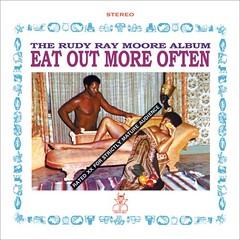[Youtube=http://www.youtube.com/watch?v=jmFhgpL_rQY]
“Voodoo Child (Slight Return)“
John “Mitch” Mitchell (July 9, 1947 November 12, 2008) was an English drummer, best-known for his membership in The Jimi Hendrix Experience. Mitchell was known for his work on such songs as “Manic Depression” (a 3/4 rock waltz that finds Mitch playing a driving afro-cuban inspired beat), “Voodoo Child (Slight Return)“[1], “Fire” and “Voodoo Chile” (a deep blues groove with subtle hi-hat). Mitchell came from a jazz background and like many of his drummer contemporaries was strongly influenced by the work of Elvin Jones, Max Roach, and Joe Morello.
Mitchell pioneered a style of drumming which would later become known as jazz fusion. Alongside Hendrix’s revolutionary guitar work and songwriting, Mitchell’s playing helped redefine rock music drumming.
Electric Ladyland cover, photo by David Montgomery
The death of Mitch gives me the opportunity to discuss the photo on Electric Ladyland, one of my alltime favourite record covers. The photo depicts nineteen nude women lounging in front of a black background.
- “The cover was put together by Chris Stamp and Track Records art director David King while Hendrix was in the US. Stamp sent King and photographer David Montgomery down to the Speakeasy to round up some girls, with the brief to make them look like “real people. At £5 a head (or £10 with their knickers off) this sounds like authentic Stamp.” —33⅓ on Electric Ladyland by John Perry[2].
One of the 19 girls, Reine Sutcliffe, told the music paper Melody Maker:
- “It makes us look like a load of old tarts. It’s rotten. Everyone looked great but the picture makes us look old and tired. We were trying to look too sexy, but it didn’t work out.”
British visual culture connoisseur Stephen Bayley adds:
- “The concept was fully in accordance with the spirit of the Sixties: at the same time Harry Peccinotti and David Hillman had done a memorable photo feature for Nova magazine” –The Independent on Sunday, July 16, 2006 by Stephen Bayley[3]
I’m afraid I can’t agree with miss Sutcliffe on this matter. I find the realism in this photo not enticing but more than fascinating nonetheless, though I also admit I empathize about denying her five minutes of glamourous fame.





